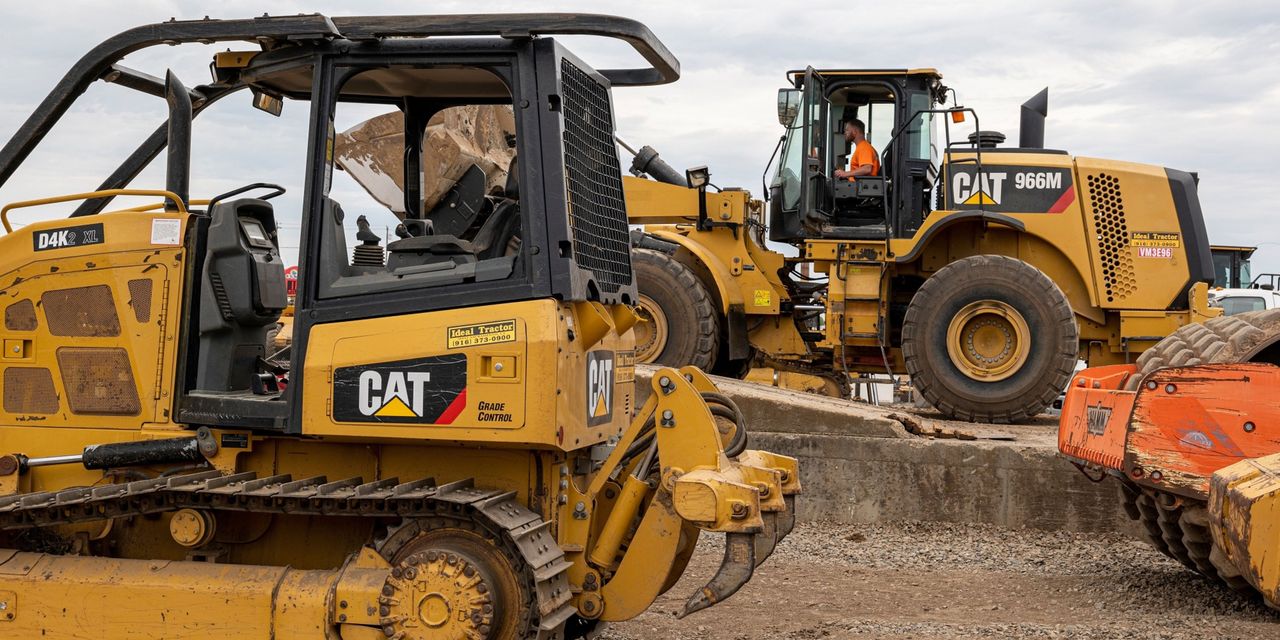Caterpillar
stock is at a crossroads. First-quarter results looked great, but the stock wasn’t moving Thursday. Investors are just too worried about the economy.
The construction equipment maker, reported first-quarter earnings per share of $4.91 from $15.9 billion in sales. Wall Street was looking for profit of $3.80 a share from $15.1 billion in sales. A year ago,
Caterpillar
(ticker: CAT) reported earnings of $2.88 a share from $13.6 billion in sales.
The first-quarter numbers looked good but the shares were down 0.1% in premarket trading.
S&P 500
and
Dow Jones Industrial Average
futures rose 0.7% and 0.5%, respectively.
It was a lukewarm reaction. Guidance can’t be blamed. Along with current results, guidance looks solid. The company expects operating profit margins to be in the “top half” of its target range. Wall Street expects full-year sales to come in at about $63 billion, which means operating profit margins should fall between 16% and 18%. The
Caterpillar
comment means margins should be north of 17%. Wall Street is currently modeling 2023 margins of about 16%.
The company gives a range of margins based on sales levels. Operating profit margins depend on sales because more sales means more machines sold, which means better utilization of Caterpillar’s plants and equipment.
Caterpillar’s construction related sales rose 10% year over year. Sales to resource industries, such as mining, increased 21%. Energy-related sales grew 24%.
In the fourth quarter, construction-related sales increased 19% year over year. Sales to resource industries, such as mining, increased 26% and sales to energy industries also increased 19%.
The economy has been weighing heavily on investors’ minds. Baird analyst Mig Dobre described this Caterpillar quarter as a tug of war in a recent research report. “Good earnings are colliding with negative investor sentiment,” he wrote. That goes for all the industrial and machinery stocks he covers.
He expected an earnings “beat,” but the problem is he sees “increasing likelihood of a 2024 [commercial] construction slowdown coupled with mounting fundamental headwinds.” Those include peaking order backlog, tighter credit conditions and the price/cost spread compressing.
Coming into Thursday trading, Caterpillar stock was down about 10% this year but has risen about 3% over the past 12 months. That’s very close to the performance of the
S&P 500
and
Dow Jones Industrial Average
over the same period.
Write to Al Root at [email protected]
Read the full article here











